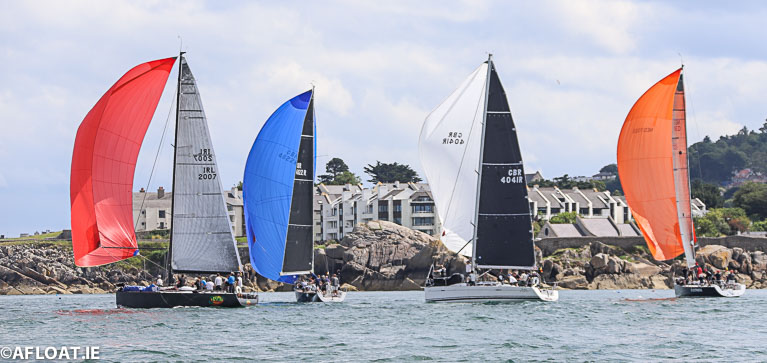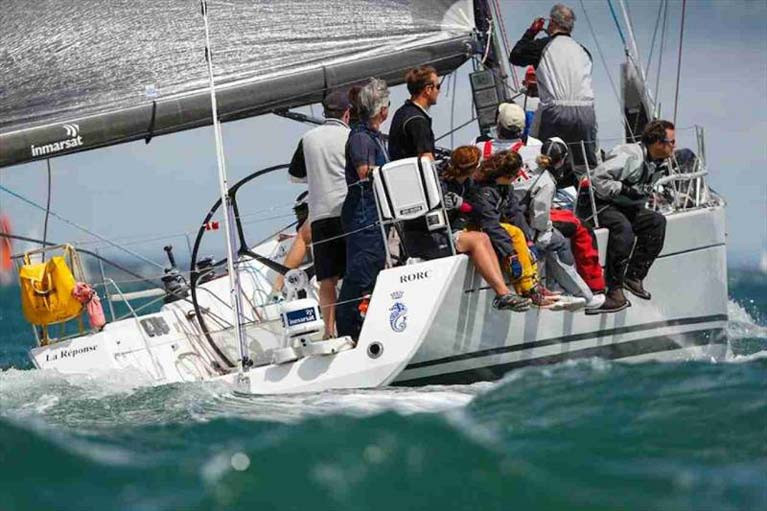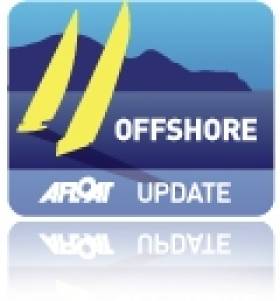Displaying items by tag: First 40
The Dublin Bay Sailing Club (DBSC) Cruiser Zero fleet will get a boost this week when its latest addition drops anchor in Dun Laoghaire Harbour at the Royal Irish Yacht Club.
The First 40 La Response, formerly known as Courier Zen and a veteran of several Commodore's Cup teams is Dublin Bay bound according to its former owner Andrew McIrvine, an ex Admiral and Commodore of the Royal Ocean Racing Club.
McIrvine wrote on social media: 'End of an era. Have been packing up Larry [La Response] to sail off to her new home in Dublin this weekend. Quite a decade. We took her over from Géry T in April 2010'.
Among other results, McIrvine was second in the 2016 RORC IRC National Championship in the cruiser-racer design.
McIrvine bought the boat from French offshore supremo Gery Trentesaux where she was previously known as Courier Zen.
Afloat understands that the new 40-footer is currently on its way from Cowes to new Dublin owners and will be based at the Royal Irish Yacht Club from Tuesday.
It will be a fillip to a seven-boat or more DBSC Cruiser Zero class racing that was in question only a couple of years ago.
 Class Zero yachts competing at Volvo Dun Laoghaire Regatta in July 2019 - the class will have a second First 40 this season with the arrival of La Response from Cowes. Pictured from left Jump Juice from Cork, El Gran Senor from the Clyde, Forty Licks from East Down and Eleuthera from Greystones
Class Zero yachts competing at Volvo Dun Laoghaire Regatta in July 2019 - the class will have a second First 40 this season with the arrival of La Response from Cowes. Pictured from left Jump Juice from Cork, El Gran Senor from the Clyde, Forty Licks from East Down and Eleuthera from Greystones
According to insiders, the Trentesaux owned Beneteau's are all specially prepared. This particular boat has a twin skinned sandwich hull as against a standard single skin hull. It also has an IRC friendly fin keel rather than a fin and bulb. It also has a high spec carbon mast and keel.
 The successful Forty Licks from East Down is a sistership to La Response Photo: Afloat
The successful Forty Licks from East Down is a sistership to La Response Photo: Afloat
As well as a great boost to the local fleet, it also means more competition for the successful Northern Ireland First 40, Forty Licks on the Irish Sea circuit in Dublin Bay, Belfast Lough, and the Clyde in Scotland.
As regular Afloat readers will know, the First 40, designed by Farr Yacht Design, is the heir to the hugely popular and successful Beneteau First 40.7 and something of a new benchmark for 40’ cruisers when introduced in 2009.
Beneteau Celebrates Success Down Under
Following the historic success of 2009 when two FIRSTs occupied the first two places in the overall IRC and ORC rankings, the 2010 race has seen another Beneteau double as two Firsts won their class in the 600-mile offshore fixture.
True to its reputation, the 2010 race took place in extreme conditions with winds reaching 45 knots and the suspense maintaine right to the end.
The well-named FIRST 45 Victoire won the race in IRC2. The FIRST 40 Paca was the winner in IRC3.
The Irish agent for Beneteau is BJ Marine.
























